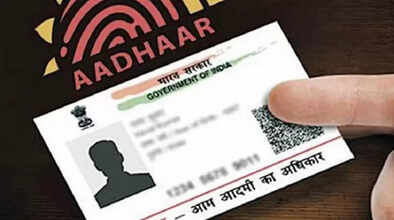UIDAI Update: Do you know that Aadhaar has these 4 different forms, know the details

The Unique Identification Authority of India (UIDAI) issues Aadhaar cards to every citizen of the country, including children below the age of five. Children below the age of five get a blue or child Aadhaar card. Today Aadhaar card has become such an important identity card that it is required for almost all official work like school, college, or bank. However, do you know that there are many forms of Aadhaar?
According to UIDAI, the different forms of Aadhaar are Aadhaar letter, Aadhaar PVC card, e-Aadhaar, and m-Aadhaar. However, all forms of Aadhaar are equally valid and acceptable.
Aadhaar PVC: Aadhaar PVC card is a PVC-based Aadhaar card that can be ordered online by paying a nominal fee. It is a PVC-based durable and easy to carry card with many security features. Aadhaar PVC card is equally valid.
Aadhaar Letter: Aadhaar letter is a laminated paper document issued by the Unique Identification Authority of India (UIDAI) to Aadhaar number holders after enrolment or update. It contains a secure QR code bearing its printing and issuance dates.
e-Aadhaar: e-Aadhaar is a password protected electronic copy of Aadhaar, digitally signed by UIDAI. As per the Aadhaar Act, e-Aadhaar is as valid as the physical copy of Aadhaar for all purposes. Aadhaar number holder can download e-Aadhaar in three ways.
By using enrolment number
By using Aadhaar number
By using VID
The OTP for downloading e-Aadhaar will be received on the registered mobile number.
mAadhaar:
mAadhaar is a mobile app that allows Indian citizens to access their Aadhaar card details on their smartphones. The app was developed by the Unique Identification Authority of India (UIDAI).
Apart from all the above forms, UIDAI also says that there is also masked Aadhaar. Masked Aadhaar means replacing the first 8 digits of the Aadhaar number with “xxxx-xxxx” while only the last 4 digits of the Aadhaar number are visible.

